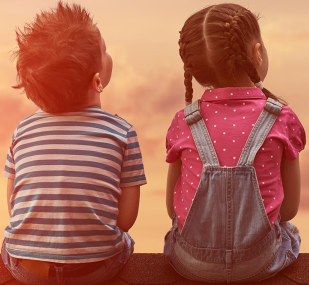
Sexual Abuse
Involves forcing or enticing a child or young person to take part in sexual activities, not necessarily involving a high level of violence, whether or not the child is aware of what is happening.
1. Introduction
1.1 Sexual abuse often occurs in conjunction with the other categories of child abuse especially emotional abuse in order to maintain control and secrecy. Children from birth onwards may be subjected to child sexual abuse which can have a long-term impact on physical, emotional, social and educational development. The psychological harm of child sexual abuse can be at least as severe as the physical effects.
1.2 Many children and young people do not recognise themselves as victims of sexual abuse - a child may not understand what is happening and may not even understand that it is wrong especially as the perpetrator will seek to reduce the risk of disclosure by threatening them, telling them they will not be believed or holding them responsible for their own abuse. It’s never a child’s fault they were sexually abused – it’s important to make sure children know this.
1.3 Perpetrators may deliberately target children they know to be vulnerable such as children with special educational needs or disabilities, those who have endured emotional trauma and those whose circumstances make them vulnerable (for example, children in residential settings). Children and their families may be groomed and manipulated by perpetrators to gain their trust and compliance. Some victims and survivors are manipulated into mistaking the sexual abuse they suffered for love and some believe the sexual abuse was their fault. Perpetrators can use their reputation, authority and position of trust as opportunities to abuse and also to deflect and discredit accusations where concerns arise.
1.4 There are two types of sexual abuse – contact and non-contact abuse and sexual abuse can happed in person or online.
1.5 Contact abuse is where an abuser makes physical contact with a child including:
- Sexual touching of any part of a child’s body, whether they are clothed or not
- Using a body pat or object to rape or penetrate a child
- Forcing a child to take part in sexual activities
- Making a child undress or touch someone else
1.6 Contact abuse can include touching, kissing and oral sex, sexual abuse isn’t just penetrative.
1.7 Non-contact abuse is where a child is abused without being touched by the abuser. This can be in person or online and includes:
- Exposing or flashing
- Showing pornography
- Exposing a child to sexual acts
- Making them masterbate
- Forcing a child to make, view or share child abuse images or videos
- Making, viewing or distributing child abuse images or videos
- Forcing a child to take part in sexual activities online or through a smartphone
1.8 Abusers are not always males, females can also be sexual abusers.
2. Signs of sexual abuse
2.1 Sometimes children won’t understand that what is happening to them is wrong. Signs of possible sexual abuse can be physical or emotional and behavioural, including:
- Knowledge of sexual behaviour/language that seems inappropriate for their age;
- Physical symptoms including pregnancy in adolescents where the identity of the father is vague or secret, sexually transmitted infections (STIs), anogenital warts, soreness in the genital and anal areas, discharge or unexplained bleeding in the genital areas
- Injuries and bruises on parts of the body where other explanations are not available especially bruises, bite marks or other injuries to breasts, buttocks, lower abdomen or thighs;
- Children displaying sexually harmful behaviours
- Child perpetrators of sexual violence and abuse
- Injuries to the mouth, which may be noted by dental practitioners.
- Children who use sexual language or have sexual knowledge that you wouldn’t expect them to have;
- Children who ask others to behave sexually or play sexual games;
- Frightened of or seeking to avoid spending time with a particular person;
- Having nightmares or bedwetting
- Self-harm
- Changes in eating habits or developing an eating problem
- Changes in mood, feeling irritable and angry, or anything out of the ordinary
3. If a child reveals abuse
3.1 Whenever a child reports that they are suffering or have suffered significant harm through sexual abuse the initial response from all practitioners should be to listen carefully to what the child says and to observe the child’s behaviour and circumstances. It’s important to:
- Listen carefully to what they’re saying
- Let them know they’ve done the right thing by telling you
- Tell them it’s not their fault
- Say you’ll take them seriously
- Don’t confront the alleged abuser
- Explain what you’ll do next
- Report to your safeguarding lead what the child has told you as soon as possible
3.2 The child must not be pressed for information, led or cross-examined or given false assurances of absolute confidentiality, as this could prejudice police investigations, especially in cases of sexual abuse.
4. More information
4.1 CSA Regional Referral Pathway
5. Useful Website
51 The NSPCC website has some helpful information about sexual abuse including risk factors, signs to look out for and the effects that sexual abuse can have on a child or young person.